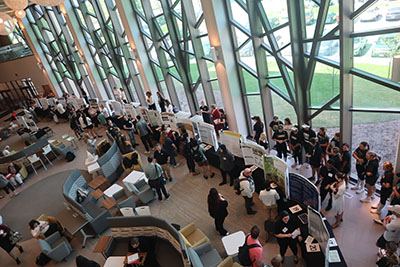Student Type
Graduate
College Affiliation
College of Education and Human Services
Department
Literacy and Reading
Submission Type
Poster
Abstract
The purpose of this project is to validate how 1) Dennison’s Brain Gym movements activate 2) Temporal Sampling Framework (TSF) and phonology 3) increased academic fluency. Students aged 5-12 from three different SES groups—1600 per group—are from St Louis districts. Groups include 1) students with learning differences/average or gifted IQ. 2) Control groups have students without learning differences/average IQ 3) and students without learning differences/gifted IQ. Testing occurs outside school hours in a homework help center with occupational therapy (i.e. homework/movement), speech and language services (i.e. homework/audiology). We hope to find improved academic scores expected after Brain Gym movements and the autoregressor studies verify data. This will build on 1) prevention/intervention techniques 2) meta-analysis of learning differences a) movement/TSF functions underlying Dyslexia/learning differences b) auditory-specific and occupational therapy movement exercises c) more effective phonological screeners—infants through adulthood, and English speakers/native languages.
Recommended Citation
Bowman, Julie and Panagos, Rebecca, "Auditory Temporal Sampling Activation and Phonological Awareness" (2023). 2023 Student Academic Showcase. 13.
https://digitalcommons.lindenwood.edu/src_2023/Posters/Session1/13
Included in
Auditory Temporal Sampling Activation and Phonological Awareness
The purpose of this project is to validate how 1) Dennison’s Brain Gym movements activate 2) Temporal Sampling Framework (TSF) and phonology 3) increased academic fluency. Students aged 5-12 from three different SES groups—1600 per group—are from St Louis districts. Groups include 1) students with learning differences/average or gifted IQ. 2) Control groups have students without learning differences/average IQ 3) and students without learning differences/gifted IQ. Testing occurs outside school hours in a homework help center with occupational therapy (i.e. homework/movement), speech and language services (i.e. homework/audiology). We hope to find improved academic scores expected after Brain Gym movements and the autoregressor studies verify data. This will build on 1) prevention/intervention techniques 2) meta-analysis of learning differences a) movement/TSF functions underlying Dyslexia/learning differences b) auditory-specific and occupational therapy movement exercises c) more effective phonological screeners—infants through adulthood, and English speakers/native languages.



Comments
Poster submission